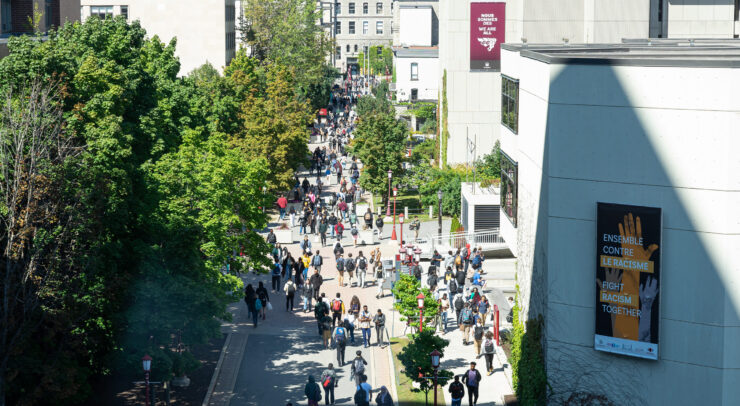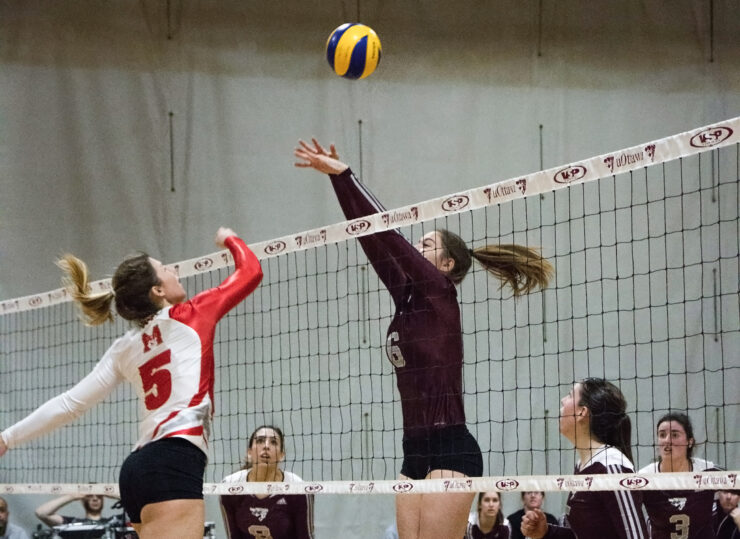Dear Editor,
As we approach a new cycle of student union elections, I wanted to share some thoughts about how the University of Ottawa Students’ Union (UOSU) can better engage the student community.
It’s no secret that most students don’t know what the Union does. As a past President and three-time Board member, I’ve tried to learn a lot of lessons about what the Union does well, and the many ways in which it can improve.
Nothing should be read as a criticism of the many hard-working people who work there (often with little recognition), but rather as ideas to consider as the Union continues to build capacity to do more things as a relatively new organization on our campus.
1. “It’s academics, stupid”
Political history teaches us that the most important issue to voters is the economy, leading to the famous quote from Bill Clinton’s 1992 presidential campaign – “it’s the economy, stupid.” In the same way that ‘real’ elections are often won on the economy, ‘student’ elections can and should be won on academics.
Ultimately, whether you’re politically left, centre, or right, politically engaged or disengaged, pro- or anti-student union, first year or fifth year, a social sciences major or an engineering student, we all have to take classes. What ties us all together is academics. And I think the Union should be laser-focused and vocal on it.
The successful implementation of the pass/fail campaign in 2020, at a time when people most needed it, was an example of grassroots student activism and institutional pressure by the student union achieving a big collective win for students. Although pass/fail is probably finished as a policy option, there are several other things the candidates could consider promising.
For instance, an anonymous Reddit user in May 2022 suggested pushing the University to make an archive of course syllabi, so that students can get an idea of what a course’s workload will be before they enroll. UCalgary does this. If the University says no, the Union could also consider building its own portal, where students could anonymously upload syllabi.
Another idea is to widely promote and expand the University’s new changes on academic regulations, which make it easier for students to self-report absences.
The services of the Union’s Student Rights’ Centre could be promoted more widely, and perhaps its scope should be expanded to help students dealing with disputes in residence. These students are often international or first-year students, and this would be a great way for the Union to help these groups.
And maybe the Union should have an “Academic Rights Complaint Form” on the front page of its website, or maybe even in Brightspace — a clear and obvious red button where students can flag complaints about any given academic issue. Depending on the nature of the problem, cases could be triaged to the SRC, flagged as casework for Executives, or referred to dedicated volunteer representatives among Recognized Student Governments or the UOSU’s Board. A similar concept was briefly implemented in 2020 but not maintained after.
The Union can be a force for social justice, and I personally believe that it should. But I think the UOSU is at its most influential when it is able to propose ideas that break beyond the insular community of political science and arts students who care about emerging social justice issues (which I am admittedly a part of).
During COVID, it was addressing concerns about virtual proctoring, compassionate grading, and class workload that garnered the most attention. The debate and discussion about what the “post-COVID” issues are are overdue. Is it academic accommodations? Open-access learning material? Study spaces?
For more people to believe the UOSU has a meaningful purpose on campus, it needs to propose and implement ideas that would help every single student.
2. Sunshine is the best disinfectant; care about and open up governance
As a fifth-year student, my cohort is the last to remember when undergraduate students were represented by the Student Federation of the University of Ottawa (SFUO). That organization disbanded after uOttawa withheld its funding and the student population kicked them out, due to several financial mismanagement scandals.
The UOSU’s governance structures aren’t all that murky. There’s a Board of Directors, which meets once a month to debate constitutional and policy changes, receive updates from executives, and approve things like the Annual Budget. There’s an Executive Committee which runs day-to-day operations and speaks on behalf of the organization. But few people know what exactly happens at these meetings.
Potential solutions include maintaining an Instagram page to share notes from Board meetings, scheduling meetings for the semester well in advance, and regularly maintaining and publicizing the public meeting calendar.
There are also concerns about the UOSU’s financial management. A survey we ran in 2020 found that students agreed that the UOSU ran important services, but were more concerned about how the Union managed their money. A recent Board motion to compel the organization to share financial reports in monthly emails is a great step, but more can be done, including engaging faculty student associations (known as “RSGs”) and the Finance Committee in the creation of the Annual Budget, and publishing it in detail on the website.
Every action the UOSU makes, and every spending decision the UOSU makes, is something which students should be able to easily access and learn about. As the SFUO taught student unions throughout the country, there can be no cutting corners when it comes to managing student money.
Further, the hiring of a full-time staff person for governance matters could go a long way to help build a culture of caring about student governance. This person could help with documentation for Board meetings, coordinating and publicizing committee meetings, ensuring the UOSU’s policies are being followed throughout the organization, training staff and Board members on governance matters, helping organize the General Assembly, and overseeing Executive and Board transition.
I also hope that student newspapers will take a keener interest in the UOSU’s activities and projects, offering criticism when necessary, yes, but also presenting a higher volume of balanced information so that students can draw their own conclusions about the UOSU’s projects and goals. The role the student newspapers played in bringing to light the financial mismanagement scandals which led to the decline of the SFUO should not be understated, but I also think student papers could implement simple, written records of what the Union is doing as a student-funded organization, such as The Gateway’s “Notes from Council” initiative.
Ultimately, good student governance, and good oversight of student governance, both lead to better and more considered decision-making by the organization. It’s a win-win.
3. Communicate – throw something at the wall and see what sticks
The most frustrating thing for me when I worked at UOSU was feeling like I was doing a lot of work, and realizing that people around me – even my friends – often had no clue what I was spending my time on.
It’s tempting to call everything a communications challenge, but more frequent communication can be part of the solution. And I’m not talking about more emails!
Social media is only part of the answer, since it only reaches people who have already discovered the UOSU in some other way. But, Executives could post stories about initiatives they are working on more frequently – quantity over quality – resisting the temptation of making a perfect graphic for instead simply getting some information out there.
There also appears to have been a decline in the relationship between the Union and the student newspapers. Whatever the origin is of these problems, it is important that this is improved in the future.
But crucially, why doesn’t the Union take advantage of the new in-person format? Why don’t the UOSU’s services do a mandated number of class talks per semester? Perhaps the Executive should set the example, and go into a few lecture halls each month to talk about what they are doing in a minute or less?
There are giant pillars and boards with advertising opportunities throughout campus. Perhaps the Union could purchase physical space for advertisements on a major campaign they are running. And why don’t we mass-produce pamphlets for each of the UOSU’s services, to be placed in 101-Week kits, at Pivik, and distributed throughout campus?
To conclude, the UOSU is a 4-year-old organization with huge pressures and demands, managing a $5M budget, numerous stakeholder relations, and close to 100 staff. Sometimes, it can be tempting to try and do too much — and in many ways, the Union already is. But by sticking to what has worked for other student unions — focusing on academics, caring about governance, and increasing the volume of communication, I hope that the Union can gain more relevance in campus life, and make a meaningful impact in the lives of more students.
And most importantly, I hope that students will get involved, run for election, debate ideas, and vote!





